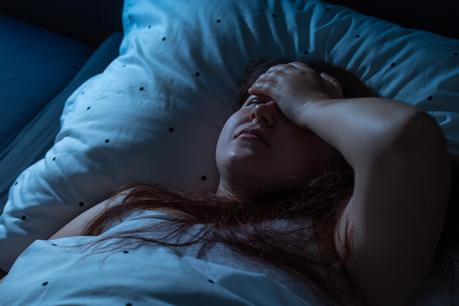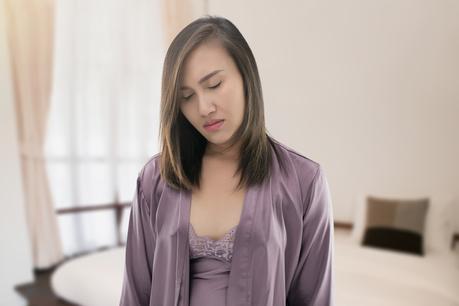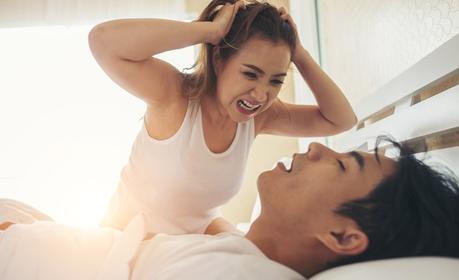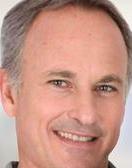Sleep disorders disrupt an individual's everyday life to a major extent, and healthcare burdens in countries across the globe have been indicating a rapid spike as poor sleep quality and loss of sleep continues to result in a rising number of sleep-related or associated conditions and chronic diseases.
Some of the common conditions associated with sleep-related issues are heartburn, diabetes, cardiovascular disease, musculoskeletal disorders, kidney disease, neurological disorders, respiratory problems, mental health problems, and thyroid disease.
Table of Contents
Common Sleep Disorders
Among the over 90 distinct sleep disorders, the most common types are:
- Insomnia
- Sleep Apnea
- Narcolepsy
- Restless Legs Syndrome (RLS)
- Rapid Eye Movement (REM) Sleep Behavior Disorder
- Circadian Rhythm Sleep Disorders (CRSDs)
- Hypersomnia
- Short Sleeper Syndrome (SSS)
Insomnia Statistics
Insomnia manifests as difficulty in falling asleep or staying asleep, and has been noted as a condition that causes a range of other symptoms and chronic diseases in sufferers.

- According to CDC, 35% of adults reported not getting 7 hours of sleep per night, which is the recommended number of hours of healthy sleep
- According to Fortune Magazine, approximately US$411 Billion is lost annually due to lack of sleep and reduced productivity as a result among workers in the US
- Insomnia sufferers are 75 to 90% more likely to experience other medical disorders such as hypoxemia, GSD, and pain conditions
- The average sleep hours recommended for teenagers is 6.5 hours, but around 20% of teens globally sleep for less than 5 hours per night
- Among individuals aged 40 to 59 years, 40% reported short duration sleep of getting less than recommended number of hours of sleep each night
- Insomnia is the most common sleep disorder in the US, and around 30% to 50% of adults are affected, while 10% to 15% suffer from chronic symptoms
- Insomnia lasting for less than a month is considered transient, and if it continues for 6 months or more it is termed short-term, and it is considered chronic if it persists for 6 months or more
- Teens aged 14-15 years are more prone to the onset of symptoms of sleep deprivation, and experience the highest decrease in number of hours of sleep per night
- Various sleep surveys and studies have yielded mixed results about the prevalence of insomnia among different sleeper groups. Some conservative estimates indicate that 10% to 30% of adults live with chronic insomnia. For other studies, this figure is closer to 50% to 60%.
- Between 4 to 6% of the general population have hypersomnia
- Approximately 30% to 40% of adults in the US report symptoms of insomnia at some point in a given year
- Short-term insomnia has an estimated prevalence of 9.5% in the US, but around 1 in 5 cases of short-term insomnia transitions to chronic insomnia, which can persist for years
- Insomnia may be responsible for over US$63 billion loss in the US due to absenteeism and presenteeism
- Accidents and errors by people suffering from insomnia may result in an additional US$31 billion lost annually
- Symptoms of insomnia show in around 83% of people with depression
- Women are more likely to experience insomnia than men, and estimates place the lifetime risk of insomnia as 40% higher in women
Obstructive Sleep Apnea Statistics
Sleep apnea is a medical condition that causes brief repetitive pauses in breathing during the process of falling asleep or while sleeping, and occurs when the muscles in the back of the throat or the soft fatty tissues relax. Obstructive Sleep Apnea (OSA) is the most common sleep apnea.
- Prevalence of obstructive sleep apnea associated with accompanying daytime sleepiness is approximately 3 to 7% for adult men and 2 to 5% for adult women in the general population
- Between 24% and 31% of men and 9% and 21% of women reported having OSA, which is distinctly much higher in men
- OSA has been noted in 1 to 3% of children of preschool age
- Sleep apnea sufferers are likely to develop high blood pressure if not addressed early
- Over 18 million of US citizens have sleep apnea-related conditions
- Studies indicate that prevalence of sleep apnea is around 3% to 7% in individuals of average weight and 20% in individuals of above average weight
- Overall, around 80% of severe and moderate OSA goes undiagnosed
Narcolepsy Statistics
Narcolepsy is associated with excessive daytime sleepiness, sleep paralysis, cataplexy, and sleep hallucinations. Narcolepsy sufferers are known to sleep for around 12 to 20 hours, which exceeds the 8 hours recommended number of hours of healthy sleep by far.
- Prevalence of narcolepsy in the general population is 0.06%, or 3 million people in countries across the globe
- Prevalence of narcolepsy is more prominent in some western countries, and affects approximately 1 in 2,000 citizens (200,000 Americans and approximately) in the US
- The onset of narcolepsy in typically evident between the ages of 10 years, whereas 30% of narcoleptic patients exhibit its initial symptoms during childhood
- It is estimated that only 25% of people who have narcolepsy have been diagnosed and are receiving treatment
- A close relative of 10% of narcolepsy patients have narcolepsy disorder
Restless Legs Syndrome Statistics
Restless Legs Syndrome (RLS) is a sensory disorder, which causes the urge to move the legs, and this typically occurs while the sufferer is sitting up or lying down, and can generally disrupt sleep.
REM Behavior Disorder Statistics
REM Behavior Disorder (RBD) is a parasomnia, in which the subjects act out dreams with physical Prevalence of REM behavior disorder among the general population is 0.5 to 1%.
Circadian Rhythm Sleep Disorders Statistics
Circadian Rhythm Sleep Disorders (CRSDs) refer to disruptions in the timing of sleep and wake cycle, and the consequences that result from disruption.
- Delayed Sleep Phase Disorder (DSPDs) is the most common CRSD, with an estimated prevalence of 0.17% in the general population, and 7-16% among adolescents
- An estimated 5-10% of chronic insomnia patients in sleep clinics have DSPD
- Among the adult population, 3% suffer from any circadian rhythm sleep disorder
- Around 16% of adolescents and 10% of adults with any sleep disorder have CRSD
Hypersomnia Statistics
Long sleepers - suffering from a condition known as idiopathic hypersomnia - are among those who require more than the recommended number of sleep hours of 8-9 hours per night. On average, long sleepers are known to clock 10 to 12 hours per night to feel their best.
- Adult long sleepers will typically sleep for 10 to 12 hours a night
- Men are more inclined to sleep longer than women
- Long sleepers have indicated in studies that they can get by on 9 hours of sleep per night, but a majority of subjects of sleep studies reported sleeping for 12 to 15 hours on the weekend to make up for lost sleep during weekdays
- Long sleeping has been found in approximately 2 percent of the population, with men at a slightly higher rate of having it than women
- According to a recent study, short- and long-duration sleepers were 35% and 25% more likely to experience a 5-kg weight gain, respectively, as compared with average-duration sleepers over 6 years
- Careful analysis of the data from the Nurses' Health Study, involving around 72,000 women, showed that women who slept nine to 11 hours per night were 38% more likely to have coronary heart disease than women who slept eight hours
- Studies have also indicated that around 15% of individuals with depression exceeded the recommended number of hours of sleep each night or suffer from hypersomnia
- During the study analysis, it was also found that death rates were significantly higher among persons who slept 9 or more hours a night than for those who slept 7 to 8 hours a night
Short Sleeper Syndrome Statistics
Sleeping regularly for less than the stipulated 7 hours in a 24-hour period can be termed as short sleep duration or short sleep syndrome (SSS).
Rarest Sleep Disorder
Kleine-Levin Syndrome Statistics
Kleine-Levin Syndrome (KLS) - also known as 'Sleeping Beauty' syndrome - is a rather rare neurological disorder, which is characterized by recurrent bouts of excessive sleeping (hypersomnolence), and conditions also include cognitive and behavioral issues when the individual is in the state of wakefulness.
- Kleine Levin syndrome (KLS) is a neuropsychiatric disease that affects about 1 in a million people
- Individuals with KLS have been known to sleep between 12 and 24 hours at a time over a few days or a period of weeks
- KLS episode first manifest in individuals ranging between ages of 6.3 to 44.6 years: 10% started before age 12, 80% during adolescence, and 10% in people older than 20 years
- Males (68%) are primarily affected by Kleine-Levin syndrome
- A recent study estimated KLS prevalence at 1.8 cases per million people in France
- KLS has been reported in people of a variety of ethnicities and locations and has been reported in many countries in Europe, in India, the Middle East, South Africa, South America, North America, and eastern Asia - (Please note: this list is not comprehensive)
- In rare cases, KLS episodes have been shown to recur over a period of 10-20 years
- Manifestations during episodes include heightened urge to eat (hyperphagia), headaches, and/or increased sexual drive
Parasomnias
The term - parasomnia - refers to general sleep disruptions from the REM sleep cycle and non-REM sleep cycles. Individuals experience episodes of unusual behaviors prior to falling asleep, while asleep, or during the arousal period between sleep and wakefulness.
- Sexsomnia
- Sleepwalking
- Night Terrors
- Nightmare Disorder
- Snoring
- Excessive Daytime Sleepiness
- Sleep Paralysis
- Catathrenia
- Congenital Central Hypoventilation Syndrome
- Exploding Head Syndrome
- Attention Deficit/Hyperactivity Disorder
- Delayed Sleep Phase Disorder
- Shift Worker Syndrome
- Sleep Myoclonus
- Sleep-Related Eating Disorder
- Fatal Familial Insomnia
Sexsomnia Statistics
Sexsomnia refers to unusual behavior of enacting or performing a sexual act during sleep, and most sufferers are often unaware of their unusual behaviors and actions when they awaken.
- Sexsomnia was reported by almost 8% of patients at a sleep disorders center, and was around 3-times more common in men (11%) than in women (4%)
- Studies indicate that at least 7.6% of patients (63 of 832 participants) at a sleep disorder center reportedly engaged or initiated a sex act with a bed partner during sleep
Sleepwalking Statistics
Sleepwalking is also a parasomnia, and involves abnormal behaviors or movements during sleep. Sleepwalking - formally known as somnambulism - is more common in children than adults.

- Prevalence rate for children and adults 15 and older falls between 2.9% and 4.2%
- Around 40% of children experience at least 1 sleepwalking episode during childhood, and sleepwalking episodes can last for a few seconds to a half an hour; with most finishing in less than 10 minutes
- Most sleepwalking events occur between the ages of 3 and 7 years, and occurs more often among children than adults
- A long-term study found that 29% of children from around 2 to 13 years old experienced sleepwalking with a peak in incidence between 10 and 13 years of age
- In adults, sleepwalking prevalence is estimated to be up to 4%
- Conclusion according to meta-analysis considered from 51 separate studies of sleepwalking, 5% of children and 1.5% of adults (globally) experienced a sleepwalking episode in the last 12 months (between 2019 and 2021)
- In the general population, 2%-4% of adults reported sleepwalking and most are on a continuum that originated with childhood illness. Adult-onset sleepwalking accounts for <20% of all adult sleepwalkers. However, the clinical epidemiology is different in the psychiatric population
- According to 2-12 results of a new Stanford University School of Medicine research, it was found that about 3.6 percent of US adults - or upward of 8.4 million - are prone to sleepwalking
- Around 22% of children whose parents have no history of sleepwalking will experience this condition
- In contrast, 47% of children are likely to sleepwalk if one parent has a history of it, and 61% of children are likely to do so if both parents do
Night Terrors Statistics
Night terrors, also referred to as sleep terrors, can cause deep fear while an individual is asleep, and result in disrupting or affecting normal sleep patterns.
- Night terrors occur in only 3-6% of children, between the ages 4 to 12 years, and subside by age 10 years
- Prevalence of sleep terrors was 36.9% at 18 months and 19.7% at 30 months; 49% of affected children were boys, and 51% were girls
- Research has yielded discrepant results regarding the likelihood of experiencing night terrors with measurements ranging from 1.7% to almost 56% of individuals and ages ranging from 18 months to adolescence
- Night terrors are most common in children between 1 and 5 years invited commentary of age
Nightmare Disorder Statistics
Frightening dreams usually occur during REM sleep, and are considered normal or common in children under 10 years of age. Nightmares however also occur in teens and adults. Nightmares are only considered a disorder if found to be causing disturbance and distress and obstructing healthy.
- According to a Multivariate Analysis of Covariance (MANCOVA) study conducted on 116 participants (mean age = 20 years maintaining a nightmare log and psychiatric symptom checklist for 21 consecutive days), individuals who reported 3 or more nightmares across the 3 weeks reported more dissociation, psy-chosis-proneness and psychiatric symptoms than participants reporting 2 nightmares or less
- Prevalence estimates of nightmares based on a student population vary from 30% to 55% on a monthly basis, and 8% to 38% on a weekly basis
- Studies indicate that approximately 1% to 7% of adults have weekly nightmares, and 5.3% of the general population has a nightmare problem currently
- Nightmares have been classified as a core clinical symptom of posttraumatic stress disorder (PTSD), and also have been variably associated with anxiety and depressive symptoms
- Nightmares are believed to be associated with some genetic and psychological factors, and around 7% of children who experience nightmares have a family member, parents, or siblings with a history of nightmares
- Nightmares are most common in preschoolers (children aged 3-6 years) because this is the age at which normal fears develop and a child's imagination is very active
- Some studies estimate that as many as 50% of children in this age group have nightmares
- Nightmares involve frightening or unpleasant dreams that disrupt the child's sleep on several occasions and cause distress or problems with everyday life
- Individuals who stay up late at night are more prone to having nightmares frequently
- Most dreams are silent, and a large majority of dreams are images
Snoring Statistics
Snoring occurs when the soft tissue in the back of the throat vibrates due to turbulence while inhaling and exhaling during sleep. Though all 'simple snorers' may not be suffering from a sleep disorder, many serious snorers may have Obstructive Sleep Apnea (OSA).

- Primary snoring without other symptoms is thought to affect between 10 and 12% of children
- Obesity, smoking, drinking alcohol, or having frequent nasal congestion all increase the risk of habitual snoring
- Snoring is thought to affect 44 percent of males and 28 percent of females between the ages of 30 and 60 years
- Snoring is not frequent or regular, but 37% of American adults snore at least a few times in a week
- According to adult snoring statistics, in addition to the 37% of Americans who snore at least a few nights a week, 27% of adults snore every night or almost every night
- Around 40% of men habitually snore, compared to 24% of women
- Studies have proven in some UK studies that 80%-90% of people sleeping with a snorer have difficulty achieving REM sleep
- Around 56% of partners sleeping with a snorer claim that snoring has an adverse effect on their wellbeing
- According to study findings, 40% of respondents complained that their snoring partners affected their mood
- Approximately 30% of people aged 30+ are regular snorers
- Men aged 70 or older are more of silent sleepers, and are less likely to snore
- Around 1 in 3 older adults will snore at least a few nights a week
- 70% of snorers claim that this problem runs in their families
- Habitual snorers have a 5 times higher risk of heart disease than those who snore only occasionally
- About 50% of people who snore loudly have obstructive sleep apnea
- 70%-95% of people with obstructive sleep apnea regularly snore
- Surgery is successful in 7o% to 95% of snoring cases
Excessive Daytime Sleepiness Statistics
Excessive Daytime Sleepiness (EDS) refers to the urge to fall asleep during daytime hours, and is common in both adults and children.
Sleep Paralysis Statistics
Sleep paralysis (SP) is characterized by the sensation of being unable to move while awakening from sleep. Sleep paralysis can be best described as a transitional state that occurs in the form of temporary inability to move, react, or speak. This generally occurs while asleep, in the process of falling asleep or awakening.
- Between 20% to 50% of patients with narcolepsy experience sleep paralysis, but sleep paralysis is also common in the general population
- Approximately 7.6% among the general population experiences at least 1 episode of sleep paralysis in their lifetime
- SP is more common when sleeping in a supine position, and SP prevalence rates are significantly higher in the student population (28.3%), compared to the general population (7.6%)
- According to a pilot study of 31 patients with elevated blood pressure, 41.9 percent had isolated sleep paralysis, 35.5 percent had panic attacks, and 9.7 percent had panic disorder
Catathrenia Statistics
Catathrenia is a parasomnia that is relatively rare and undocumented. It involves the subject making groaning - sometimes loudly - during sleep. This disorder can occur during any stage of sleep, but most often occurs with highest frequency during REM sleep or deep sleep.
- Catathrenia disorder is more prominent in patients, at around 16% of the overall patient pool
- A family history is noted in about 15% of those with the disorder
- Contrary to snoring which occurs during inhalation, groaning occurs during exhalation, and one groan can last as long as 30 seconds
- Oxygen saturation during a Catathrenia episode is usually negligible, above 90%
- Approximately 43% of catathrenia patients had a history of a parasomnia
- Around 86% of individuals with the disorder had orthodontic procedures
Congenital Central Hypoventilation Syndrome Statistics
Congenital Central Hypoventilation Syndrome (CCHS) is a condition related to the autonomic nervous system, and affects breathing, especially during sleep. It also causes nocturnal groaning.
- There are estimated to be 1,000 - 1,200 cases of CCHS world-wide, and CCHS affects males and females equally, and there is no cure currently
- Patients with diseases of neural crest origin, such as congenital central hypoventilation syndrome (CCHS) and Hirschsprung disease, had a 5-10% chance of developing neuroblastic tumors, compared to 0.01% for the general population
- Estimated CCHS incidence is one in 150,000-200,000 live births in France and Japan
- A family history of CCHS is noted in about 15% of those with the disorder
Exploding Head Syndrome Statistics
Exploding Head Syndrome (EHS) is a disorder characterized by the perception of loud noises (e.g. a bomb explosion, gunshot or cymbal crash) when going to sleep or awakening.
- EHS can occur at any age, and the median age of onset is 54 years, but it may start in childhood and adolescence
- EHS may not be that uncommon as a study of college students found a lifetime prevalence of 18% and 16.6% had recurrent cases with equal numbers of males and females
- In average, one attack per day to one attack per week occurs, and some patients suffer from several attacks per night
Attention Deficit/Hyperactivity Disorder Statistics
Attention Deficit/Hyperactivity Disorder (ADHD) is an increasingly prevalent developmental disorder, and is associated with disrupted sleep and several sleep related disorders and symptoms.
Delayed Sleep Phase Disorder Statistics
Delayed Sleep Phase Syndrome (DSPS) is a sleep disorder that occurs when a person's circadian rhythm (sleep/wake cycle) is delayed from the typical day/night cycle. People with delayed sleep phase have a natural tendency to go to bed later and wake up later than what is typically considered normal.
- Prevalence of DSWPD is highest in adolescents and young adults, with rates estimated between 3.3 and 4.6 percent
- Prevalence of DSWPD in adults is lower, with estimates between 0.2 to 1.7 percent
- Approximately 51% of patients with DSWPD have had a lifetime history of depression
- Around 59% of adolescents with this disorder demonstrated poor academic performance and 45% had behavioral problems
- Prevalence of up to 8% has been reported in teenagers in the US
Shift Worker Syndrome Statistics
Shift Work Sleep Disorder (SWSD) or shift worker syndrome is a condition that can occur if an individual's natural sleep cycle is chronically disrupted as a result of working overnight, overtime, or rotating shifts.
- An estimated 20% of the working population in countries in Europe and North America is engaged in shiftwork
- Between 10% to 40% of shift workers in the US have SWSD
- Sleep-wake disturbance is severe enough to warrant diagnosis as SWSD in around 5 to 10% of night-shift workers
- Around 37.5% of post-night-shift drives have been considered unsafe during testing
- Individuals aged above 40 to 50 years are more likely to suffer from SWSD
- Around 37.5% of post-night-shift drives have been considered unsafe during testing
- The daytime sleep of the shift workers is 1-4 hours shorter than that of daytime workers; total sleep time of the SWSD patient is no longer than 4-6 hours daily
- Up to 60% of all college students suffer from a poor sleep quality and irregular sleep time, and 7.7% meet all criteria of an insomnia disorder
Sleep Myoclonus Statistics
Myoclonus causes brief twitching of single or groups of muscles and results in the body jerking while asleep or in the process of falling asleep.
- Myoclonus affects males and females in equal numbers
- In general, the incidence of myoclonus is 1.3 cases per 100,000 person-years, and the prevalence is 8.6 cases per 100,000 populations
- Symptoms ideally begin to manifest before the age of 16 years
- Prevalence of myoclonus-dystonia in Europe is estimated to be 1 in 500,000 individuals
Sleep-Related Eating Disorder (SRED) entails the subject awakening during sleeping hours to eat or drink; sometimes excessively, and almost entirely unconsciously aware of the event later.
- Ideally, sleep is initiated 1-4 hours after the last meal, partially depending on one's lifestyle and sleep duration (7-9 hours on average)
- Both men and women can have SRED, but it is more common among women, and onset typically occurs at age 20-40 years
- Around 1% to 3% of the general population appears to be affected by SRED
- Around 10 to 15% of people with eating disorders are affected by SRED
- One in 100 people are thought to have NES, and close to 5% suffer from nocturnal sleep-related eating disorder (NS-RED)
- If NS-RED occurs often enough, a person can experience weight gain and increase their risk of developing type 2 diabetes
- One in 100 people are thought to have NES, and close to 5% suffer from NS-RED
- The number of people affected by these disorders increases up to 17% in those with other eating disorders
Fatal Familial Insomnia Statistics
Fatal Familial Insomnia (FFI) is a rare genetic degenerative brain disorder that causes inability to sleep, which can lead to significant mental and physical deterioration as it worsens over time.
Some Causes of Sleep Disorders
Alcoholism
Alcohol can also induce insomnia, thereby causing symptoms such as mood swings, decreased energy level, low physical and mental health, and deteriorate the overall quality of life.

- About 76 percent of the individuals who die are men who also tend to be non-Hispanic white Americans
- An estimated 95,000 people (approximately 68,000 men and 27,000 women) die from alcohol-related causes annually
- Research has found that alcoholism is a factor in 30 percent of alcohol poisoning deaths
- Rate of alcoholism is higher among men at 16.7 percent
- A person who succumbs to excessive alcohol use loses a potential of 30 years of potential life, and as many as 40 percent of all the hospital beds across the country are used to treat health conditions that develop from alcoholism
- The epidemic is such that as many as 17 percent of men in the general population and 8 percent of women will meet the criteria for alcoholism in their lifetime
- In 2019, 25.8 percent of people ages 18 or older reported that they engaged in binge drinking in the past month; 6.3 percent reported that they engaged in heavy alcohol use in the past month
- According to the 2019 NSDUH, 14.1 million adults ages 18 and older (5.6 percent of this age group) had Alcohol Use Disorder (AUD)
- This includes 8.9 million men (7.3 percent of men in this age group) and 5.2 million women (4.0 percent of women in this age group
- An estimated 414,000 adolescents ages 12-17 (1.7 percent of this age group) had AUD; this number includes 163,000 males (1.3 percent of males in this age group) and 251,000 females (2.1 percent of females in this age group)
Depression
Insomnia is the most common manifestation of depression, and results in the onset of several other sleep disorders.
Psychosis
Sleep disorders are very common in persons with several psychosis disorders, with insomnia being a predictor of psychosis in ultrahigh risk adolescents.
- Sleep disturbance is common among individuals at risk of psychosis
- Majority of young adults with psychosis suffer from severe sleep disorders
- Chronic sleep problems affect 50 percent to 80 percent of patients in a typical psychiatric practice, compared with 10 percent to 18 percent of adults in the general US population
- Sleep disorders were significantly associated with increased psychotic experiences, depression, anxiety, fatigue, and lower quality of life
Conclusion
Sleep is very essential for an individual to remain mentally, physically, and emotionally sound. Sleeping for the recommended 8-9 hours a night or in a 24-hour span ensures better quality of life, health and wellness. Lack, less, or poor quality of sleep increases risks of serious or chronic medical conditions and diseases as well. Inadequate sleep for prolonged periods of time is known to shorten an individual's lifespan. Healthy sleep routine can be negatively impacted by unhealthy lifestyle, habits and patterns, stress and depression, and also by underlying diseases and medical conditions. Sleep disorders and sleep disruption further aggravate depression and anxiety.
Some actions or approaches can be adopted to by individuals with sleep disorders to alleviate or manage sleep-related challenges and conditions, some of which are:
- Wake up at the same time each day
- Get exposure to natural light or morning sunlight
- Eat healthy foods
- Avoid alcohol and stimulants such as nicotine and caffeine
- Limit or avoid daytime and evening naps
- Exercise regularly, but not close to bedtime
- Make the sleeping environment comfortable, including temperature, lighting, sound
- Put aside worry to reduce stress before going to bed
- Limit activities in bed
- Avoid eating or drinking close to bedtime
- Avoid connected devices, TV, and usage an hour or more before retiring to bed
- Try to go to bed at the same time each day
Developing and maintaining a proper routine and sleep hygiene has been known to aid in treating sleep disorders over a period of time. If suffering from anxiety and depression, physical illnesses and pain, or neurological problems, seek medical help to address and resolve issues, because your sleep is essential to a better, satisfactory, and healthier life.
Disclaimer *Contents, data, and information presented in this article is solely to provide a general outlook about sleep statistics and sleep facts, which are based on the results of expert studies, research, and surveys conducted by competent bodies, researchers, and organizations in the target field.Sources and References
1. https://www.cdc.gov/sleep/data_statistics.html
2. https://fortune.com/2016/11/30/sleep-productivity-rand-corp-411-billion/
Contents, data, and information presented in this article is solely to provide a general outlook about sleep statistics and sleep facts, which are based on the results of expert studies, research, and surveys conducted by competent bodies, researchers, and organizations in the target field.

